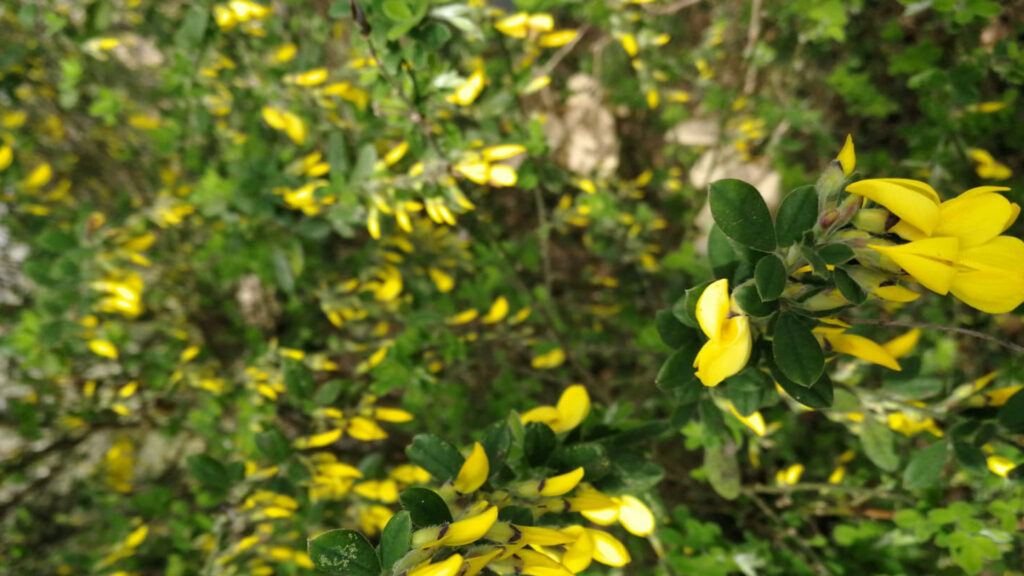
Lentisco
E’ un arbusto sempreverde appartenente alla famiglia delle Anacardiaceae, vegeta in Sardegna fino ai 500 mt insieme ad altre specie tipiche della macchia mediterranea.
Si adatta a tutti i tipi di terreno ma predilige quelli sabbiosi, ha una corteccia cenerina o rossastra che con l’eta’ tende a squamarsi, le foglie sclerofilliche sempreverdi di un colore intenso lucente sono disposte in modo sessile sull’asse centrale e hanno forma ovale allungata con apice arrotondato ed emanano un profumo resinoso. E’ una pianta dioica con infiorescenze riunite in pannocchie, la fioritura avviene in marzo /aprile, le bacche sono inizialmente di colore rosso porpora e nere a maturazione.
Le foglie del lentisco sono ricche di potassio per cui la pianta contribuisce a migliorare il terreno e favorire la ricostituzione del manto vegetale. Un tempo il legno veniva usato per piccoli lavori di falegnameria grazie al colore rosso venato, e per la produzione di un ottimo carbone. In Sardegna nella tradizione popolare , fin dai tempi dei nuragici, il lentischio era usato nella medicina e nei riti magici e religiosi in quanto capace di guarire e allontanare il malocchio.
Sino a pochi decenni orsono dai frutti neri maturi portati ad ebollizione si estraeva con un procedimento lungo e complesso, un olio molto saporito di colore verde, usato per friggere frittelle e pesci, mentre i residui della spremitura si utilizzavano per gli animali.
Attualmente la pianta viene usata in erboristeria e fitoterapia per le sue proprietà astringenti ed aromatizzanti; la resina ricavata viene usata come sostanza da masticare, poichè purifica l’alito, rassoda le gengive, come un chewing gum.
Lentisk
It is an evergreen shrub belonging to the Anacardiaceae family, which grows in Sardinia up to 500 meters together with other species typical of the Mediterranean maquis.
It adapts to all types of soil but prefers sandy ones, has an ashen or reddish bark which tends to flake with age, the evergreen sclerophyllous leaves of an intense shiny color are arranged sessilely on the central axis and have a elongated oval with rounded apex and give off a resinous scent. It is a dioecious plant with inflorescences gathered in panicles, flowering occurs in March / April, the berries are initially purple-red and black when ripe.
The leaves of the mastic tree are rich in potassium so the plant helps to improve the soil and favor the reconstitution of the vegetation. Once the wood was used for small carpentry jobs thanks to its veined red colour, and for the production of an excellent charcoal. In Sardinian popular tradition, since the times of the Nuragics, the mastic tree was used in medicine and in magical and religious rites as it was able to heal and ward off the evil eye. Until a few decades ago, a very tasty green oil was extracted from the ripe black fruits brought to the boil with a long and complex procedure, used to fry pancakes and fish, while the residues of the pressing were used for animals.
Currently the plant is used in herbal medicine and phytotherapy for its astringent and flavoring properties; the resin obtained is used as a chewing substance, as it purifies the breath, firms the gums, like a chewing gum.
Lentisque
C’est un arbuste à feuilles persistantes appartenant à la famille des Anacardiaceae, qui pousse en Sardaigne jusqu’à 500 mètres avec d’autres espèces typiques du maquis méditerranéen.
Il s’adapte à tous les types de sols mais préfère surtout les sols sablonneux, il a une écorce cendrée ou rougeâtre qui a tendance à s’écailler avec l’âge, les feuilles persistantes sclérophylles d’une couleur brillante intense sont disposées de façon sessile sur l’axe central et ont des ovales allongés forme à l’apex arrondi et dégagent un parfum résineux. C’est une plante dioïque aux inflorescences rassemblées en panicules, la floraison a lieu en mars/avril, les baies sont initialement rouge violacé et noires à maturité.
Les feuilles du lentisque sont riches en potassium donc la plante aide à améliorer le sol et favorise la reconstitution de la végétation. Autrefois le bois de cet arbuste était utilisé pour de petits travaux de menuiserie grâce à sa couleur rouge veinée, et pour la production d’un excellent charbon de bois. Dans la tradition populaire sarde, depuis l’époque des Nuragiques, le lentisque était utilisé en médecine et dans les rites magiques et religieux car il était capable de guérir et d’éloigner le mauvais œil. Jusqu’à il y a quelques décennies, un processus long et complexe extrayait des fruits noirs mûrs portés à ébullition, une huile verte très savoureuse, utilisée pour faire frire des crêpes et du poisson, tandis que les résidus du pressage étaient utilisés pour les animaux.
De nos jours la plante est utilisée en phytothérapie et en phytothérapie pour ses propriétés astringentes et aromatisantes ; la résine obtenue est utilisée comme substance à mâcher, car elle purifie l’haleine, raffermit les gencives, comme un chewing-gum.


